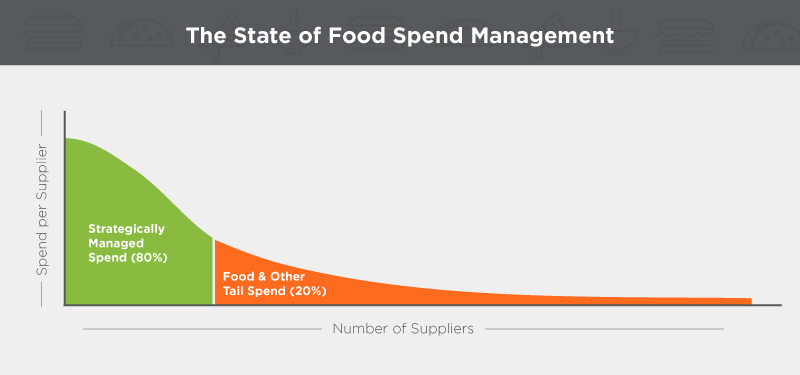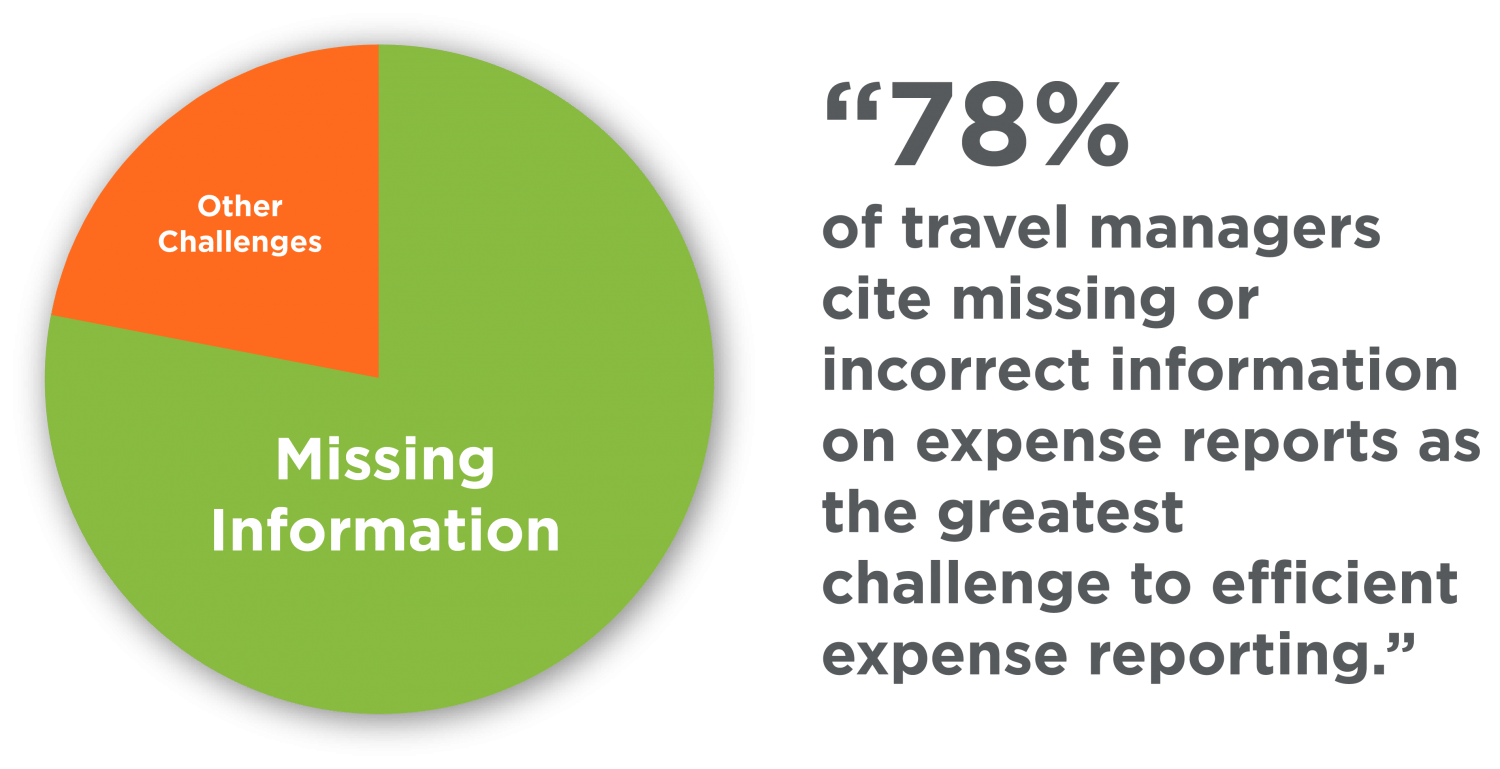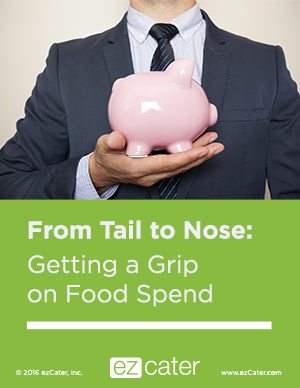Company Food Expenses: The Ultimate Tail Spend
Businesses of all sizes share common objectives. They perform a service or provide a product. They want to sway buyers, satisfy customers, and make a profit. To fully succeed, they also need to control expenses. For many businesses, though, cost control in certain areas can be elusive. That’s particularly true of food.
If you work for a large organization, however, this could actually add up to millions of dollars of unmanaged annual spend. As Benjamin Franklin wrote, “Beware of little expenses. A small leak will sink a great ship.” So, how can you get more visibility without wasting resources? Set up a process, and automate it.
We’ll walk you through how to move food out of the tail spend zone, and how to start seeing more savings with minimal effort.

Strategic Management: Understanding Food Spend
Why is food spend so difficult to manage? Food expense is typically incurred by individual staff and often relies on their independent judgment. A manager orders food to satisfy participants in her lunch-and-learn. The office admin orders in for the monthly team-building meeting. An instructor provides breakfast to encourage on-time class arrivals. Of course, the largest food expense typically lives under the heading of travel and entertainment (T&E), and that is largely at the discretion of sales.
Because employees may travel or have their own favorite local restaurants, it can seem nearly impossible to get a centralized view of what people are spending on food, and where they’re spending it. The volume of food suppliers is huge, and it would take too much time to analyze the intricacies of each transaction. For some companies, like those in the pharmaceutical industry, managing this spend properly is critical if you want to stay on the right side of the law. For others, it’s all about increasing efficiency and allocating resources in the right places.
In theory, creating an approved vendor list would simplify things. But if you’re a large company with offices in many regions, and with sales reps who travel across the country, well … you can see how that task would snowball quickly. As a company, you also don’t want to limit the tools available to your sales reps or other employees. Ideally, they’d be able to select the right caterer for the job, wherever or whenever that may be.
If you approach the task with the right tools and from the right perspective, it’s easier than you’d think to start managing your food spend. To get the most out of the money you’re spending on food, start with a general analysis of your company’s food ordering habits. Why does your company order food, and how often do you order it?

First Step: Understanding the Spend
If you want to start strategically managing your food spend, first you need to understand how big it is. You can do a quick back-of-the-envelope calculation by asking yourself a few questions:
- Do you order food for your employees, for your customers, or both?
- If your sales reps order food, how many meetings do they order for every month?
- How large are the groups that you order food for, on average?
- How much do you typically spend per head?
Once you do the math, you may find that your company is spending more on food than you’d expect. For business travelers, food “makes up more than 31 percent of daily on-the-ground business costs,” according to data from Corporate Travel Index. Nationally, businesspeople spend $20 billion on corporate catering every year. When you look at how and why you’re spending money on food today, you’ll see small opportunities for savings add up.








